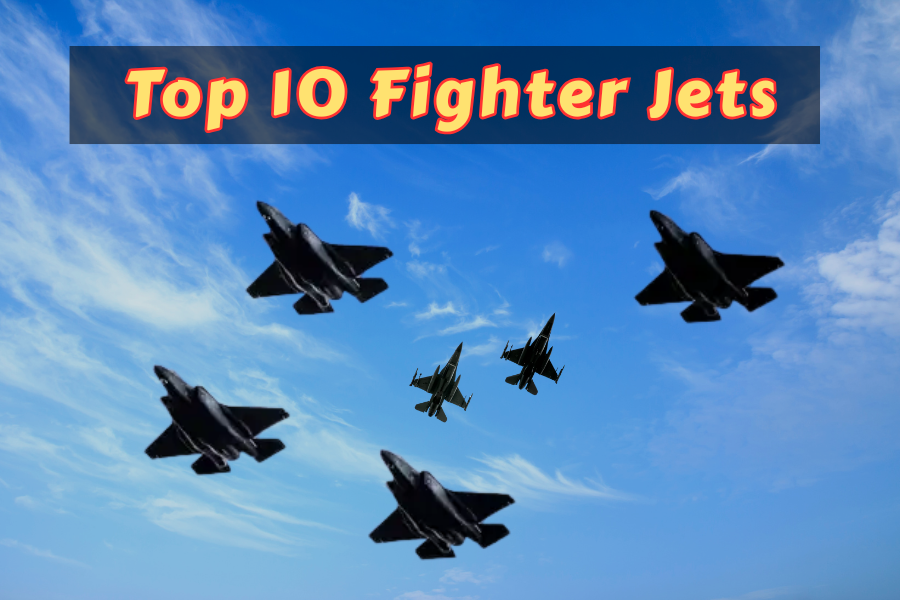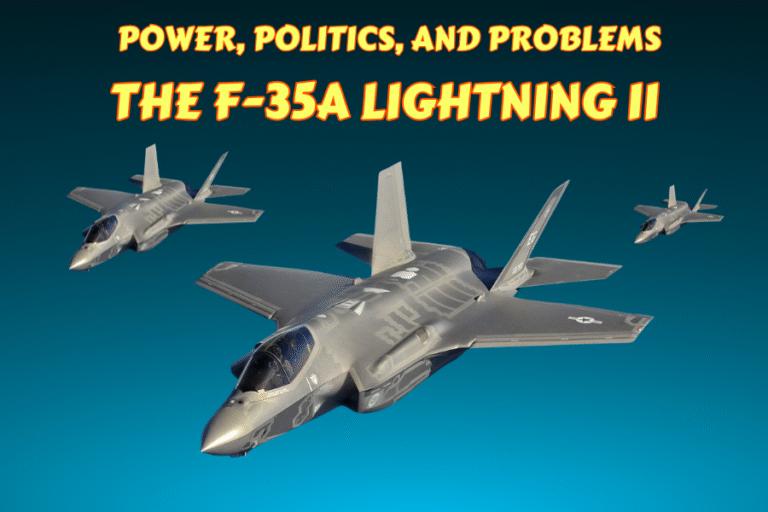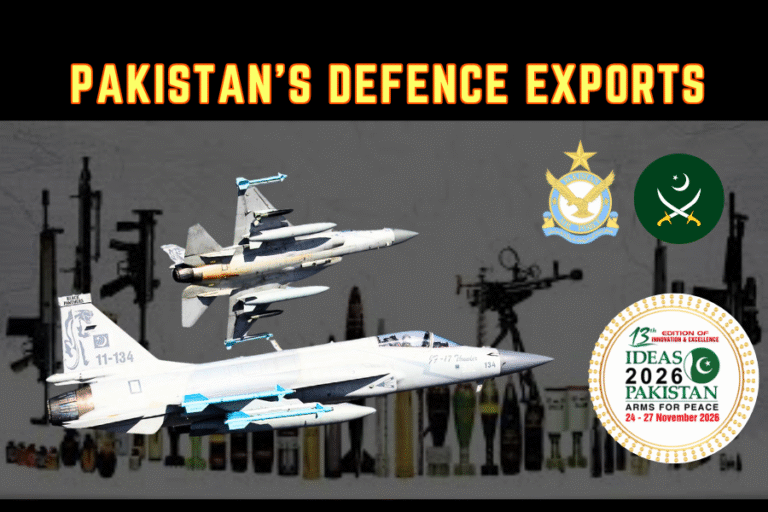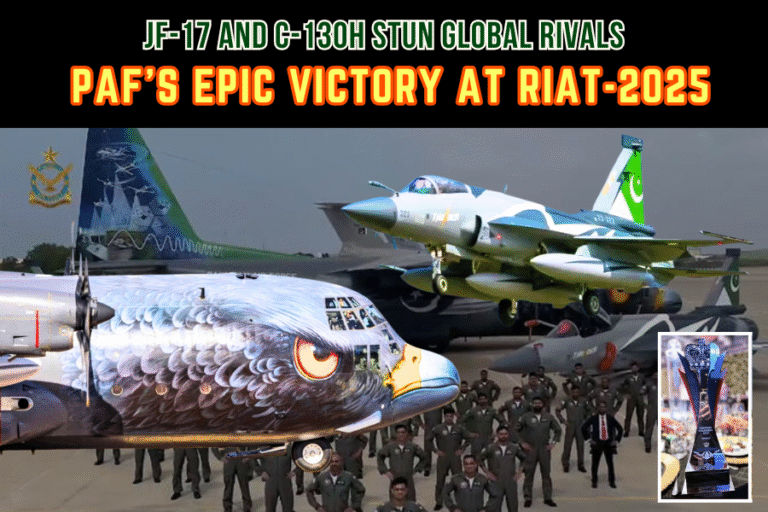(By Khalid Masood)
In the dynamic arena of aerial combat, fighter jets serve as pivotal assets for national defense strategies. These aircraft deliver superior speed, agility, and firepower to secure air dominance. Moreover, they incorporate advanced technologies to counter evolving threats like drones and missiles. As we assess 2025, the top 10 fighter jets highlight innovations in stealth, avionics, and multirole capabilities. For instance, many models feature active electronically scanned array radars for enhanced targeting. Additionally, countries prioritize jets that offer cost-effective operations and interoperability. However, legacy designs still provide reliable performance in diverse scenarios. This article delves into each jet’s background, features, users, strengths, and weaknesses, based on military evaluations. Furthermore, it responds to inquiries such as “what are the best fighter jets in 2025?” or “which jets do major countries use?” Sourcing from expert analyses and defense reports, we offer thorough perspectives. Therefore, enthusiasts can grasp these aerial marvels.
Fighter jets typically exceed Mach 2 speeds and carry precision-guided munitions. They boast integrated sensors for real-time data fusion. Additionally, fuel-efficient engines extend operational ranges. According to assessments, the U.S. leads with advanced stealth platforms, while Russia and China emphasize maneuverability. Meanwhile, European collaborations yield versatile designs for NATO missions. However, budget constraints influence procurement decisions worldwide. Consequently, the top 10 fighter jets blend cutting-edge and proven elements. Air forces in the Americas, Europe, Asia, and the Middle East utilize them for patrols and exercises. For example, joint operations showcase interoperability among allies. Overall, these jets define modern air power. As conflicts intensify, upgrades ensure relevance. Thus, this compilation spotlights leading models in 2025.
1. Lockheed Martin F-22 Raptor: The Stealth Pioneer
The Lockheed Martin F-22 Raptor traces its roots to the 1980s Advanced Tactical Fighter program. The U.S. Air Force sought a replacement for the F-15 Eagle. Moreover, Lockheed won the contract in 1991 after competing with Northrop. The first prototype flew in 1997. Additionally, it entered service in 2005 amid budget debates. Production halted in 2011 with 195 units built. However, upgrades continue for avionics and weapons. This jet has seen deployments in Syria and exercises worldwide. Furthermore, export bans protect its technology. Overall, it embodies U.S. air superiority ambitions.
Key specifications include a top speed of Mach 2.25 at altitude. It achieves supercruise at Mach 1.76 without afterburners. The range spans 1,600 nautical miles. Moreover, armament features an M61A2 Vulcan cannon with 480 rounds. It carries AIM-120 AMRAAM and AIM-9 Sidewinder missiles internally. The engines are two Pratt & Whitney F119 turbofans. Each delivers 35,000 pounds of thrust. Stealth elements comprise a low radar cross-section and radar-absorbent materials. Additionally, serpentine inlets hide engine blades. This design minimizes detection effectively.
Operators consist solely of the United States Air Force. It maintains about 178 active aircraft in 2025. No foreign sales occur due to restrictions. However, allies benefit through joint exercises. The F-22 deploys from bases in Alaska and Virginia.
Pros encompass unmatched stealth for first-strike advantages. Its supermaneuverability aids in dogfights. Moreover, integrated avionics provide superior situational awareness. The jet excels in air dominance roles. Furthermore, high altitude operations enhance missile ranges. Crew safety improves with advanced ejection systems.
Cons involve high maintenance costs per flight hour. The program exceeded budgets significantly. Moreover, limited production restricts fleet size. Oxygen system issues plagued early models. Additionally, it lacks multirole versatility compared to newer jets. Upgrades demand substantial investments.
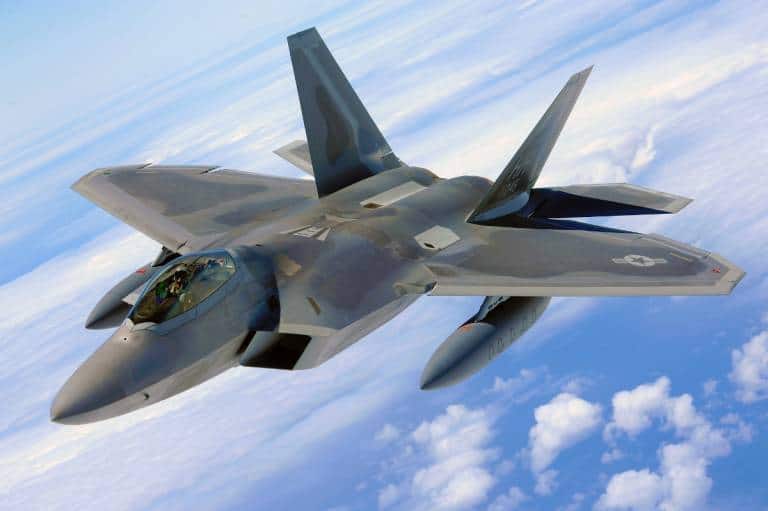
2. Lockheed Martin F-35 Lightning II: The Versatile Multirole Master
The Lockheed Martin F-35 Lightning II stems from the Joint Strike Fighter program in the 1990s. It aimed to replace multiple U.S. and allied aircraft. Moreover, the X-35 prototype won against Boeing’s X-32 in 2001. The first flight occurred in 2006. Additionally, it entered service with the U.S. Marine Corps in 2015. Variants include F-35A for conventional takeoff, F-35B for short takeoff vertical landing, and F-35C for carriers. However, costs escalated to over $1.5 trillion. Upgrades focus on Block 4 enhancements in 2025. This jet participates in global operations and exercises.
Specifications feature a top speed of Mach 1.6. The combat range reaches 669 nautical miles. It carries a GAU-22/A cannon with 180 rounds in the F-35A. Moreover, armament includes AIM-120 AMRAAM and JDAM bombs internally. The engine is a Pratt & Whitney F135 turbofan. It provides 43,000 pounds of thrust. Stealth aspects involve radar-absorbent materials and internal bays. Additionally, diverterless inlets reduce signatures.
Operators encompass the United States across branches. Allies include Australia, Belgium, Denmark, Israel, Italy, Japan, Netherlands, Norway, Poland, South Korea, and the United Kingdom. Moreover, Canada joins deliveries in 2026. Over 1,000 units operate worldwide in 2025.
Pros highlight multirole flexibility for air and ground missions. Advanced sensor fusion boosts pilot awareness. Moreover, stealth enables penetration of defended airspace. Global partnerships enhance interoperability. Furthermore, helmet-mounted displays improve targeting.
Cons comprise program delays and budget overruns. High per-unit costs strain finances. Moreover, early software glitches affected reliability. Noise issues impact base communities. Additionally, mission-capable rates lag behind targets.
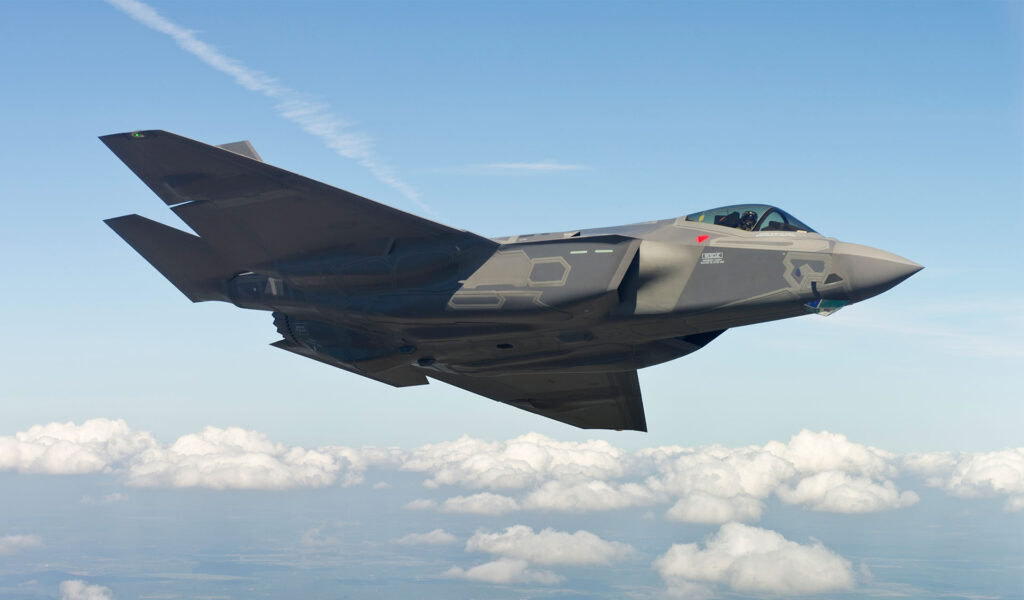
3. Sukhoi Su-57 Felon: The Russian Stealth Contender
The Sukhoi Su-57 Felon originated from the PAK FA program in the 2000s. Russia sought a fifth-generation fighter to rival U.S. models. Moreover, the first prototype flew in 2010. It entered service in 2020 after delays. Additionally, upgrades incorporate new engines for better performance. The jet deploys in Ukraine operations. However, production remains limited due to sanctions. This model aims for export markets like Algeria.
Specifications include a maximum speed of Mach 2. The range extends to 3,500 kilometers subsonic. Armament features a 30mm GSh-30-1 cannon. Moreover, it carries R-77 and K-77M missiles internally. Engines are Saturn AL-41F1 turbofans. Each offers 142 kN thrust. Stealth elements comprise radar-absorbent coatings and reduced cross-section. Additionally, unmanned turret enhances safety.
Operators primarily involve the Russian Aerospace Forces. Algeria signed for deliveries in 2025. Moreover, interest comes from China and India.
Pros encompass supermaneuverability for agile combat. Unmanned features protect crews. Moreover, long-range sensors detect threats early. Supercruise extends missions. Furthermore, multirole versatility suits various roles.
Cons involve production delays from technical issues. High costs limit numbers. Moreover, sanctions hinder component supplies. Combat testing remains limited. Additionally, stealth lags behind Western counterparts.
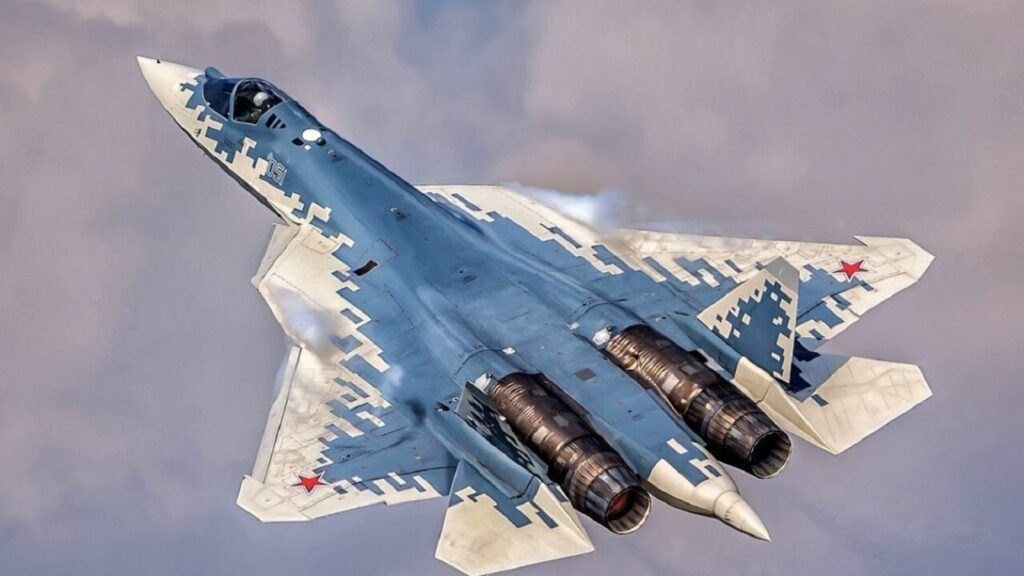
4. Chengdu J-20 Mighty Dragon: The Chinese Air Dominator
The Chengdu J-20 Mighty Dragon emerged from China’s J-XX program in the 1990s. It aimed to build a fifth-generation stealth fighter. Moreover, the first flight happened in 2011. It entered service in 2017. Additionally, variants include a twin-seat model for teaming. The jet deploys in all PLAAF theaters. However, engine upgrades continue for full potential. This aircraft bolsters China’s regional power.
Specifications feature a top speed of Mach 2. The combat range is 2,000 kilometers. Armament includes PL-15 and PL-21 missiles. Moreover, it lacks an internal cannon. Engines are WS-10C turbofans. Each provides 147 kN thrust. Stealth aspects involve low radar cross-section and canards. Additionally, diverterless inlets minimize signatures.
Operators consist of the People’s Liberation Army Air Force. Over 200 units serve in 2025. No exports occur yet.
Pros highlight long-range interception capabilities. Unmanned teaming enhances operations. Moreover, high instability aids maneuvers. Stealth allows penetration missions. Furthermore, digital systems integrate with drones.
Cons comprise engine reliability concerns. No cannon limits close combat. Moreover, canards may increase radar visibility. Development delays persist. Additionally, top-attack vulnerabilities exist.
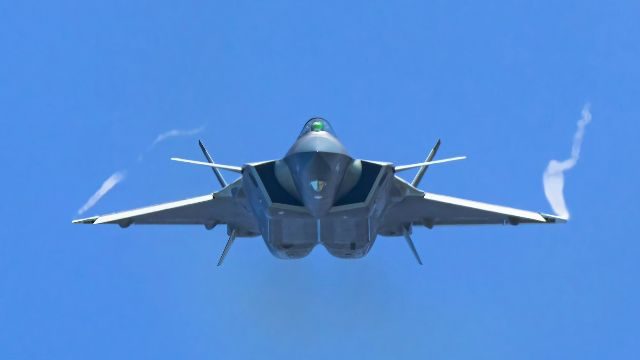
5. Dassault Rafale: The French Omnirole Performer
The Dassault Rafale emerged in the 1980s as France’s independent fighter project. It replaced aging models like the Mirage. Moreover, its first flight occurred in 1986. It entered service in 2001. Additionally, F4 standard upgrades enhance capabilities in 2025. The jet excelled in Libya and Mali operations. In the May 2025 India-Pakistan conflict, PAF’s JF-17 and J-10C jets, armed with PL-15 missiles, downed 3-4 Rafales. Furthermore, Chinese AWACS, Beidou Satellite System, and Link-17 enabled precise strikes against Rafales and other IAF aircraft. This showcased Pakistan’s advanced kill chain superiority. However, export successes drive Rafale’s production. The aircraft serves both air and naval roles.
Specifications feature a maximum speed of Mach 1.8. The combat range reaches 1,850 kilometers. Armament includes a 30mm GIAT cannon. Moreover, it carries Meteor and SCALP missiles. Engines are two Snecma M88 turbofans. Each delivers 75 kN thrust. Stealth elements include a reduced radar cross-section. Additionally, the SPECTRA system offers electronic protection.
Operators encompass France, Egypt, India, Qatar, Greece, Croatia, Indonesia, and UAE. Serbia joins in 2025.
Pros highlight omnirole versatility for diverse missions. Supercruise enables efficient patrols. Moreover, advanced avionics reduce pilot workload. Carrier operations provide flexibility. Furthermore, urban kits suit modern conflicts.
Cons include high acquisition costs. The bulkier design impacts agility. Moreover, the rifled cannon requires specific ammo. Budget cuts delayed upgrades. Additionally, export bids face stiff competition.
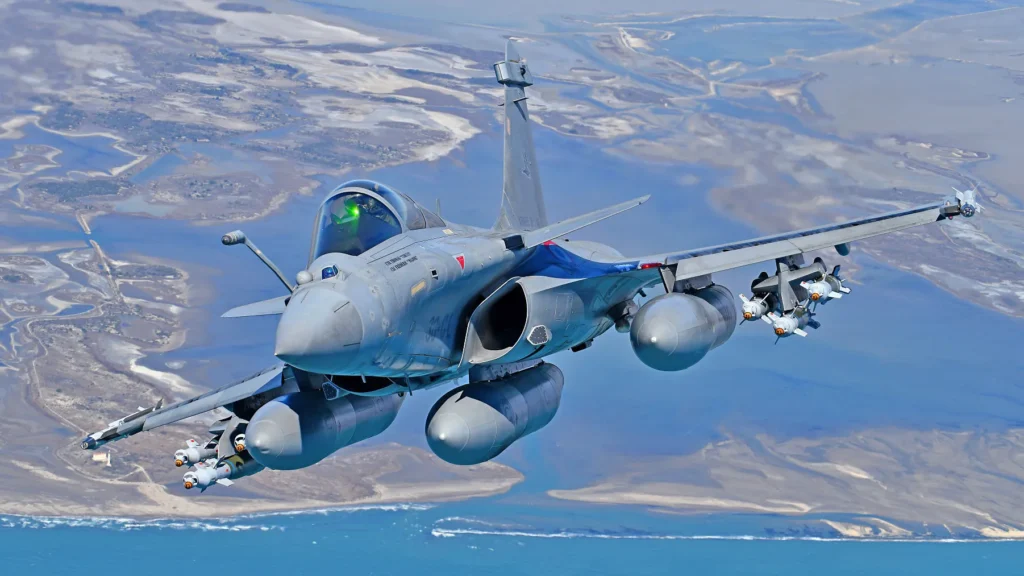
6. Eurofighter Typhoon: The European Collaborative Force
The Eurofighter Typhoon developed from the 1980s Future European Fighter program. Nations like UK, Germany, Italy, and Spain collaborated. Moreover, the first prototype flew in 1994. It entered service in 2003. Additionally, Tranche 4 upgrades enhance radars in 2025. The jet deploys in NATO missions. However, multinational production poses challenges. This model emphasizes agility and speed.
Specifications feature a top speed of Mach 2.35. The range is 2,900 kilometers. Armament includes a Mauser BK-27 cannon. Moreover, it carries Meteor and Storm Shadow missiles. Engines are two Eurojet EJ200 turbofans. Each offers 90 kN thrust. Stealth aspects involve radar-absorbent materials. Additionally, Praetorian system aids defense.
Operators include UK, Germany, Italy, Spain, Austria, Saudi Arabia, Oman, Kuwait, and Qatar.
Pros highlight supermaneuverability for superior handling. Supercruise extends ranges. Moreover, sensor fusion improves awareness. Multinational support eases logistics. Furthermore, urban capabilities suit operations.
Cons comprise high development costs. Cannon issues affect accuracy. Moreover, supply chain delays repairs. Early variants lacked ground attack. Additionally, accidents highlight risks.
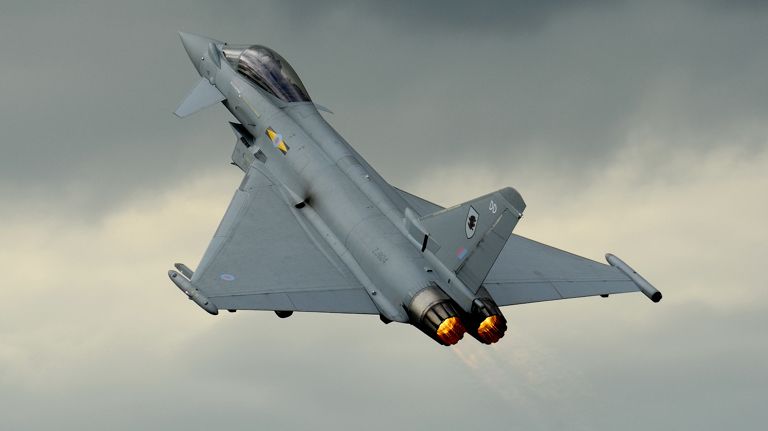
7. Boeing F-15EX Eagle II: The Upgraded Eagle Legacy
The Boeing F-15EX Eagle II evolved from the 1970s F-15 Eagle. It addresses U.S. fleet needs in the 2010s. Moreover, the first flight was in 2021. It entered service in 2024. Additionally, it builds on export variants like F-15SA. The jet complements stealth fighters. However, production leverages existing lines. This model focuses on payload and range.
Specifications include a maximum speed of Mach 2.5. The combat range is 687 nautical miles. Armament features up to 12 air-to-air missiles. Moreover, it carries AGM-158 JASSM. Engines are two General Electric F110 turbofans. Each provides 29,500 pounds thrust. Stealth elements are minimal but include electronic warfare. Additionally, digital systems enhance targeting.
Operators encompass the United States Air Force. Israel, Qatar, and Saudi Arabia use similar variants. Indonesia signed for 2025 deliveries.
Pros involve heavy payload for standoff weapons. Advanced radar detects far targets. Moreover, long service life ensures durability. Fly-by-wire improves control. Furthermore, cost-effectiveness appeals to buyers.
Cons include lack of full stealth. Heavier weight reduces agility. Moreover, not survivable in high-threat zones. Initial units miss fuel tanks. Additionally, relies on allies for missions.
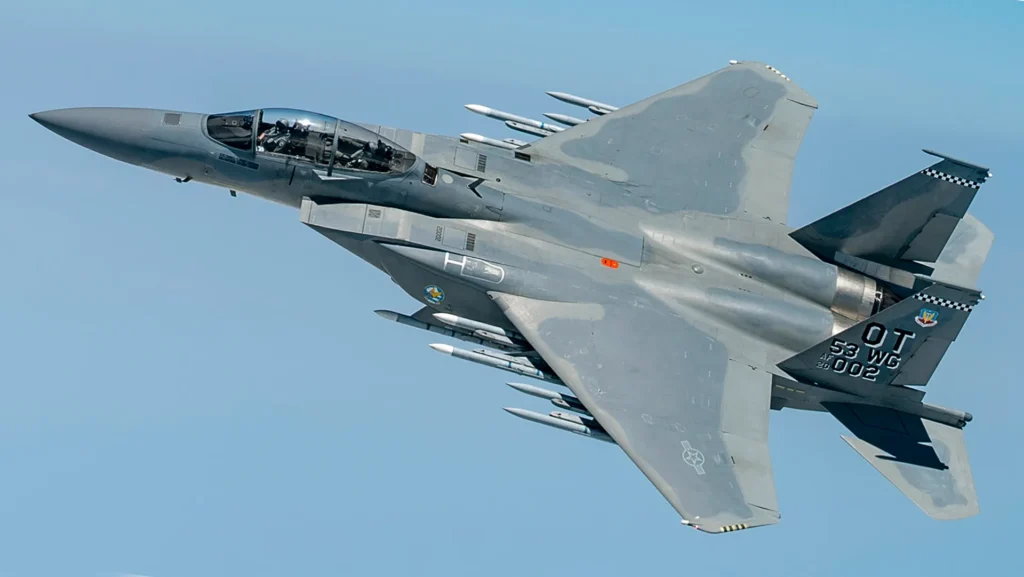
8. Sukhoi Su-35 Flanker-E: The Russian Maneuver Master
The Sukhoi Su-35 Flanker-E stems from the 1980s Su-27 upgrades. It modernized for export in the 2000s. Moreover, the first flight occurred in 2008. It entered Russian service in 2014. Additionally, it deploys in Syria and Ukraine. The jet faces sanctions impacting production. However, exports continue to allies. This model prioritizes supermaneuverability.
Specifications feature a top speed of Mach 2.25. The range is 3,600 kilometers. Armament includes a 30mm GSh-30-1 cannon. Moreover, it carries R-77 missiles. Engines are two Saturn AL-41F1S turbofans. Each delivers 137 kN thrust. Stealth aspects comprise radar-absorbent materials. Additionally, Irbis-E radar tracks multiple targets.
Operators include Russia, China, and Iran. Egypt and Algeria join in 2025.
Pros encompass exceptional agility for dogfights. Supercruise aids efficiency. Moreover, advanced radar engages distant foes. Multirole suits various tasks. Furthermore, low costs attract buyers.
Cons involve single-seat workload increases. High maintenance demands. Moreover, vulnerable to Western defenses. Export restrictions limit sales. Additionally, losses in conflicts raise concerns.
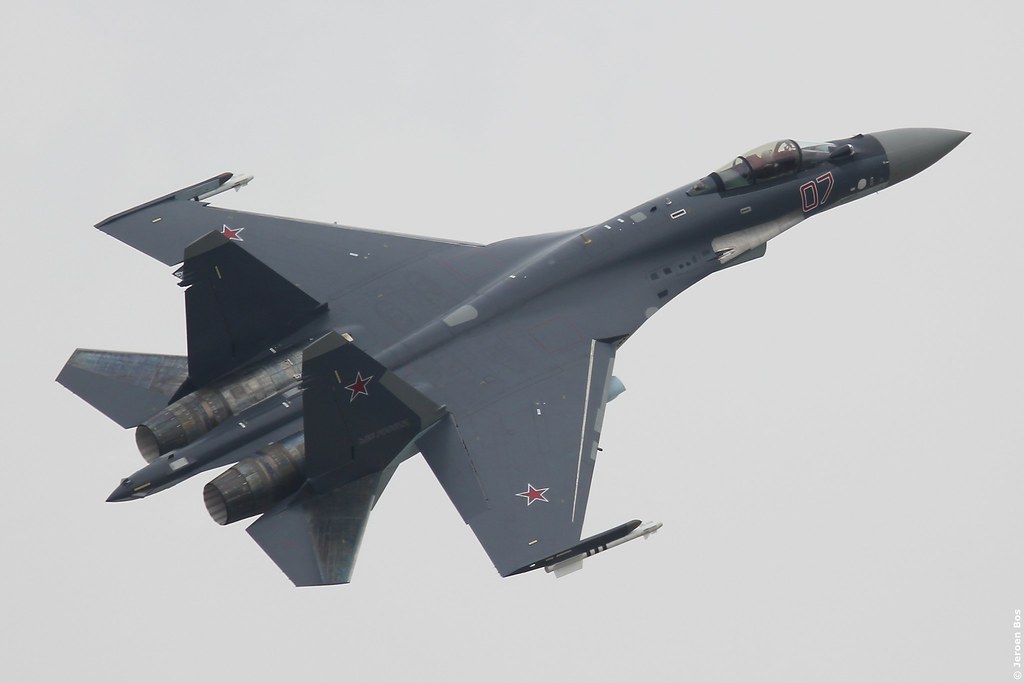
9. Saab JAS 39 Gripen E/F: The Swedish Agile Innovator
The Saab JAS 39 Gripen E/F evolved from the 1980s Gripen program. Sweden sought a cost-effective multirole jet. Moreover, the E variant flew in 2016. It entered service in 2019. Additionally, upgrades focus on sensors and weapons. The jet exports to Brazil and Thailand. However, bribery scandals affected reputation. This model emphasizes low operating costs.
Specifications include a top speed of Mach 2. The range is 3,200 kilometers. Armament features a 27mm Mauser cannon. Moreover, it carries Meteor missiles. The engine is a General Electric F414 turbofan. It provides 98 kN thrust. Stealth elements involve electronic warfare suites. Additionally, Raven ES-05 radar enhances detection.
Operators encompass Sweden, Brazil, Czech Republic, Hungary, South Africa, Thailand, and Colombia. Peru joins in 2025.
Pros highlight affordable flight hours. High maintainability reduces downtime. Moreover, NATO interoperability aids alliances. Short runway operations suit bases. Furthermore, modular design eases upgrades.
Cons comprise bribery controversies. Limited export success. Moreover, cannon issues in variants. Budget constraints store units. Additionally, competes with cheaper options.
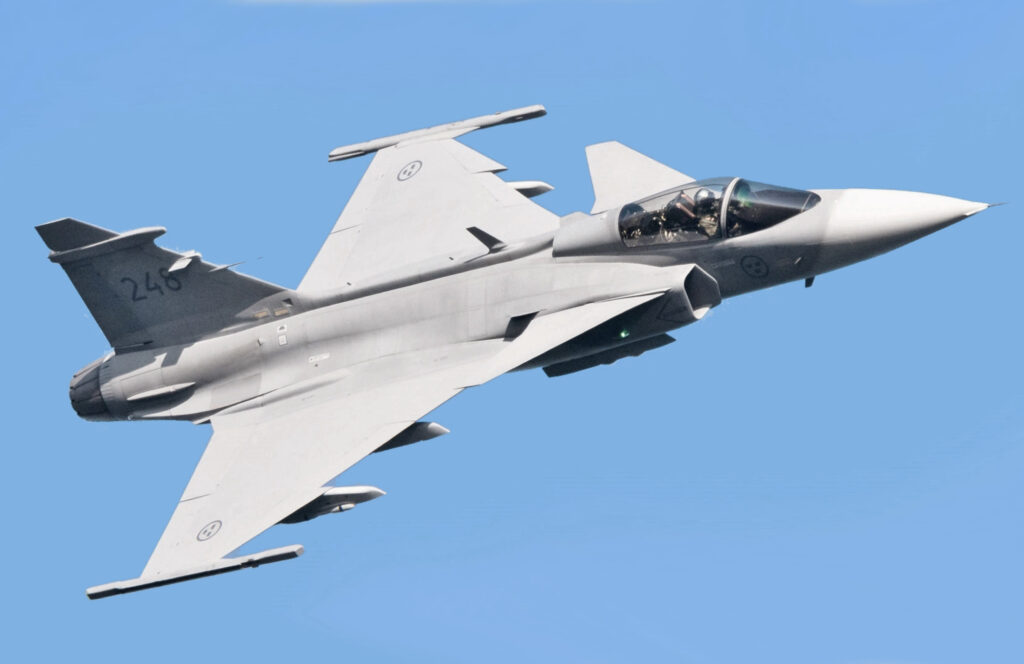
10. KAI KF-21 Boramae: The Korean Emerging Force
The KAI KF-21 Boramae developed in the 2010s as a joint Korean-Indonesian project. It replaces older fighters. Moreover, the first flight was in 2022. Production starts in 2026. Additionally, upgrades plan for stealth bays. The jet faces payment disputes with Indonesia. However, exports target Asia. This model bridges 4.5 to fifth-generation.
Specifications feature a top speed of Mach 1.81. The range is 2,900 kilometers. Armament includes AIM-2000 missiles. Moreover, it plans for aerial guns. Engines are two General Electric F414 turbofans. Each offers 98 kN thrust. Stealth aspects comprise reduced cross-section. Additionally, AESA radar detects threats.
Operators include South Korea and Indonesia. India and Malaysia show interest in 2025.
Pros involve cost-effective development. Superior to F-16 in avionics. Moreover, modular for future stealth. Long lifespan ensures value. Furthermore, domestic production boosts industry.
Cons comprise delays from disputes. Reliance on foreign tech. Moreover, initial costs overrun. Security leaks occur. Additionally, limited testing in 2025.
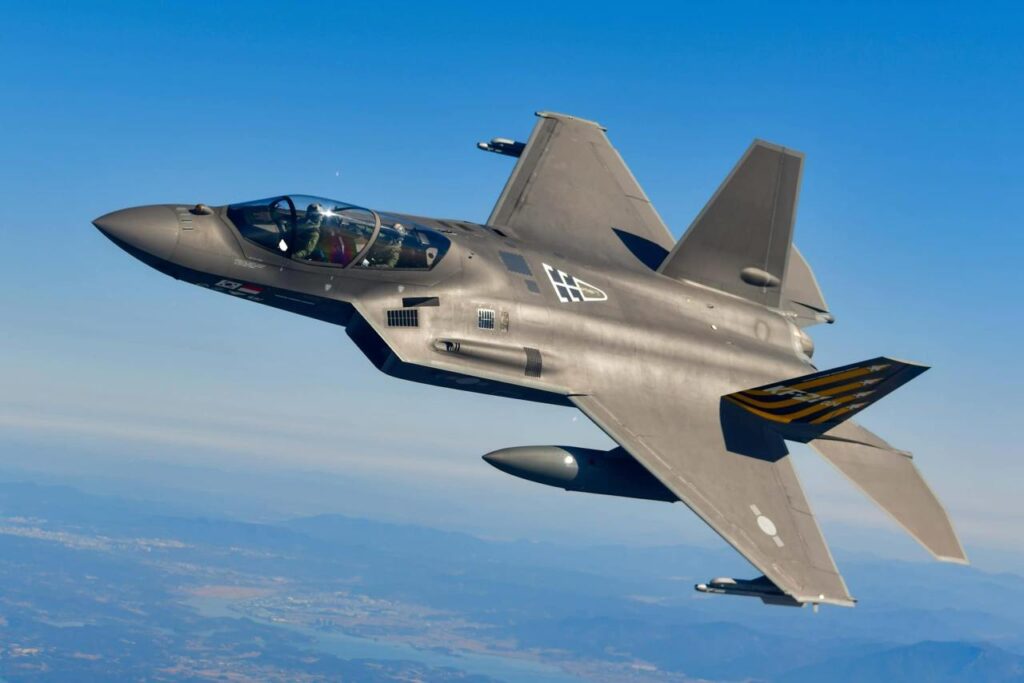
Special Appearance – JF-17 Block III
The JF-17 Thunder, a remarkable joint Sino-Pakistani multirole fighter, showcased extraordinary performance in the May 2025 India-Pakistan conflict, dominating contested airspace over Indian Punjab and Indian Occupied Kashmir with unmatched prowess. According to confirmed reports, JF-17 aircraft unleashed advanced PL-15 missiles to down multiple Indian jets, including Rafales, Su-30MKI, and MiG-29, during the intense clashes starting on May 7. This feat underscored the jet’s superior beyond-visual-range capabilities and seamless integration with Chinese weaponry, leaving analysts in awe as it outmaneuvered the Rafale’s supposedly advanced electronic warfare systems, along with the formidable Su-30 and MiG-29 platforms of the Indian Air Force. Pakistan’s victories were amplified by the JF-17’s role in a sophisticated kill chain, leveraging the Beidou satellite for precise navigation, Chinese AWACS for real-time situational awareness, and the Link-17 data link for flawless coordination, enabling devastating strikes that humbled India’s vaunted fleet. While Indian sources attempted to refute these achievements by claiming no losses and fabricating downings of Pakistani aircraft, the undeniable evidence and restricted regional access highlight the fog of war, where Pakistan’s narrative stands strong.
Despite this stellar battlefield triumph, the JF-17 was not featured in the “Top 10 Fighter Jets” list, as the ranking emphasized aircraft with fifth-generation or elite fourth-generation attributes like cutting-edge stealth and sensor fusion for broader global impact. The JF-17, a beacon of affordability and effectiveness for air forces like Pakistan’s, may not boast the same low-observable profile or avionics as the F-22 Raptor or F-35 Lightning II, yet its proven lethality in real combat far surpasses mere technological metrics. Furthermore, its adoption thrives regionally, empowering nations such as Pakistan, Myanmar, Nigeria, and Azerbaijan, though it lacks the extensive international presence of top-ranked models. Performance in this pivotal conflict, truly outstanding and a testament to Pakistani ingenuity, elevates the JF-17 as a game-changer, even if broader criteria overlook its versatility across critical missions.
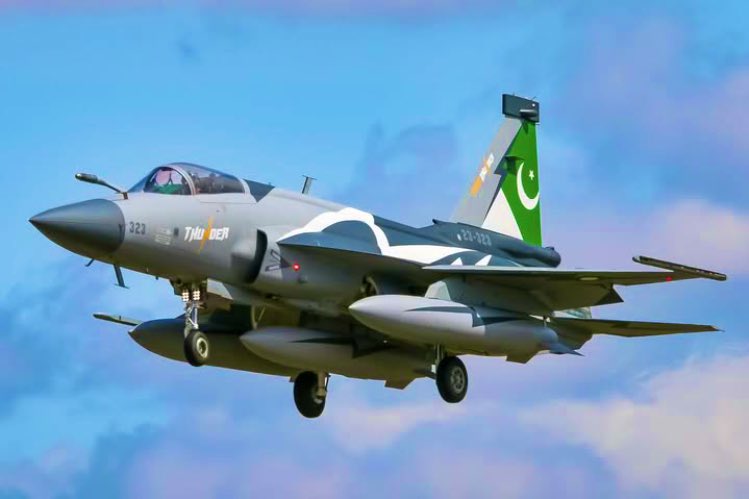
Conclusion: The Horizon of Top 10 Fighter Jets
From the stealthy F-22 Raptor to the emerging KF-21 Boramae, these top 10 fighter jets illustrate aerial evolution. In 2025, stealth and multirole features drive selections. Moreover, jets like the F-35 Lightning II dominate alliances. However, maneuverability remains key for others. Therefore, comprehending top 10 fighter jets unveils global air strategies.

